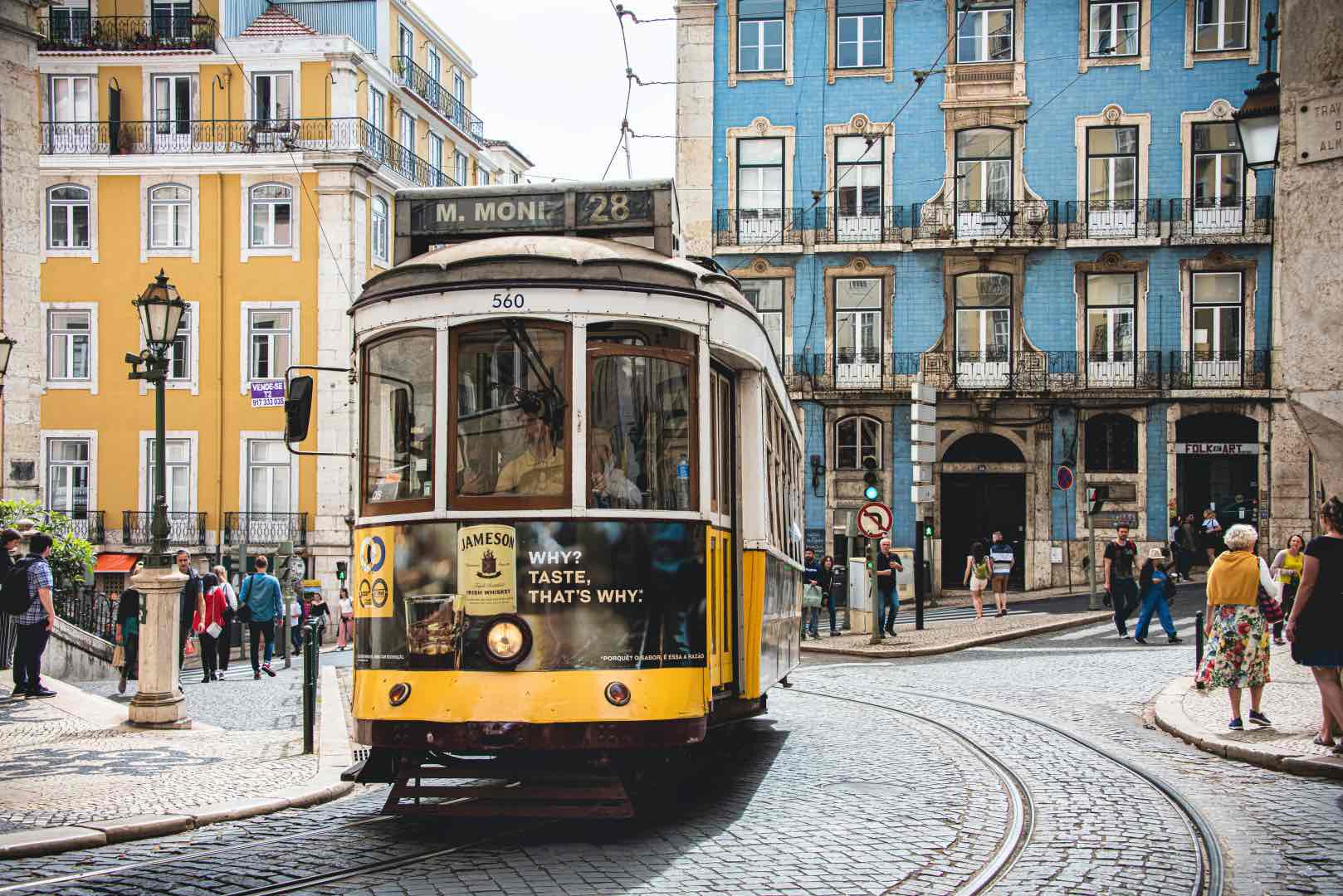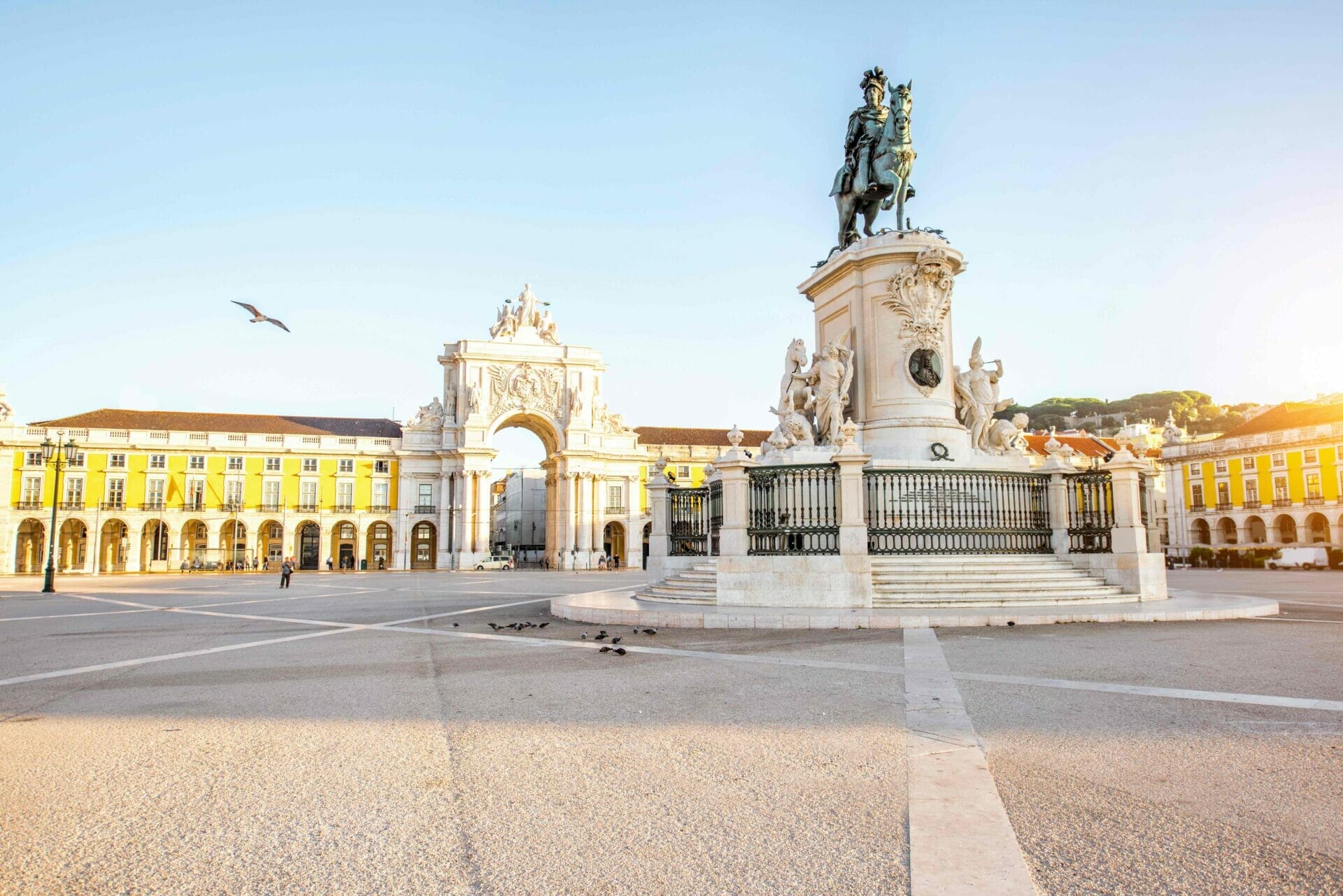Table of Contents
ToggleBest Time to Visit Lisbon: A Seasonal Guide to the City of Seven Hills
Introduction
Lisbon, Portugal’s coastal capital, is a city where age-old charm meets a vibrant contemporary lifestyle. Deciding the best time to visit Lisbon is crucial for experiencing its unique blend of traditional heritage and modern dynamism. This guide will delve into the nuances of each season, providing you with a comprehensive understanding of what to expect and how to plan your visit.
Be sure to take a look at our other guides to Portugal, such as The 5 cheapest cities to visit in Portugal. Enjoy!

Key Takeaways
Optimal Months for Balance: May and September are highlighted as the best months to visit Lisbon, offering a perfect balance of pleasant weather, fewer tourists, and an authentic experience of the city’s vibrant local culture.
Seasonal Considerations: The article emphasizes the unique characteristics of each season in Lisbon, with Spring and Autumn being ideal for comfortable weather and fewer crowds, Summer being perfect for beach activities albeit with higher tourist influx, and Winter being the best time for budget travel with cooler, yet mild weather.
Avoiding Crowds: For travellers seeking a more tranquil experience, late Autumn (November) and early Spring (March) are suggested as the best times to visit Lisbon to avoid the crowds, allowing for a more relaxed exploration of the city.
Event-Focused Visits: The article points out key events and festivals in Lisbon, such as the Festas de Lisboa in June and the Lisbon & Sintra Film Festival in November, indicating that timing your visit to coincide with these events can enhance the cultural experience.
Budget-Friendly Travel Times: For budget-conscious travellers, the low season (November to March) is recommended as the best period to enjoy lower travel and accommodation costs, while still being able to experience the city’s charm and major attractions.
Tourist Seasons: The Travel Seasons in Lisbon
Lisbon’s tourist seasons are typically divided into:
- High Season (June to August): The city buzzes with energy, festivals, and outdoor dining. However, this also means crowded streets and higher accommodation rates.
- Shoulder Season (April to May & September to October): Characterised by fewer tourists and moderate prices, offering a balanced experience of weather and crowd size.
- Low Season (November to March): The best time for budget-conscious travellers, with lower prices and fewer tourists, though some attractions may have reduced hours.
Seasons in Lisbon: When to Visit Lisbon for the Best Weather?

Lisbon, a city known for its enchanting blend of traditional architecture and contemporary culture, is also celebrated for its generally pleasant climate year-round. However, for those keen on experiencing Lisbon at its meteorological best, understanding the nuances of each season is key.
Spring (March to May) in Lisbon is a time of rejuvenation. As the city shakes off the mild winter, you’ll witness a burst of life in its many parks and along the Tagus River. Temperatures during this season range comfortably from 15°C to 25°C. This period is ideal for leisurely exploring the historical neighborhoods of Alfama and Bairro Alto on foot, where the narrow, cobbled streets come alive with the scent of blooming jacarandas. Spring also sees fewer rain showers compared to winter, ensuring more consistent sunny days, perfect for outdoor cafés and rooftop terraces.
Autumn (September to November) mirrors the spring in terms of temperature and general weather conditions. The heat of the summer dissipates, leaving behind a pleasant warmth with average temperatures hovering around 15°C to 25°C. This season is perfect for long walks along the Belem Tower or the vibrant streets of Chiado, where the autumnal light casts a soft, golden hue over the cityscape. The mild weather also makes it ideal for day trips to nearby attractions like Sintra or Cascais, where the changing leaves create a picturesque setting.
Summer (June to August) in Lisbon is characterized by its warm, sunny weather, attracting beachgoers and sun-seekers. Temperatures often rise above 30°C, creating the perfect environment for enjoying the nearby beaches like Cascais and Estoril or taking a dip in the Atlantic. However, it’s important to be prepared for the heat, particularly in the urban areas where the temperature can feel more intense. Nights in Lisbon during summer are lively, with numerous open-air festivals, outdoor dining, and vibrant nightlife, particularly in areas like Bairro Alto and Cais do Sodré.
Winter (December to February), on the other hand, offers a different charm. The temperatures drop to around 10°C to 15°C, and while it can get rainy, the city rarely experiences freezing temperatures. This cooler, quieter season is ideal for those who enjoy a more laid-back and introspective travel experience. It’s a time to delve into Lisbon’s rich cultural offerings, like its museums, historical sites, and indoor markets. The winter season also brings a unique beauty to Lisbon’s streets, with fewer tourists and a more authentic glimpse into the daily life of the locals.
Recommended Tours in Lisbon
The Best Month to Visit Lisbon
May and September are often touted as the best months to visit Lisbon. You’ll enjoy the advantages of good weather, fewer crowds, and a city vibrant with local life, not just tourists. These months offer the best balance of pleasant weather, manageable tourist numbers, and a true taste of Lisbon’s local culture.
The Best Days to Visit Lisbon
Mid-week days (Tuesday to Thursday) are generally the best time to explore Lisbon. You’ll encounter fewer crowds compared to weekends, making it easier to visit popular attractions like the Jerónimos Monastery or the Tower of Belém without long waits.
When is the Best Time to Visit Lisbon for Events?

Lisbon’s event calendar is brimming with festivals and celebrations throughout the year. Key events include:
- Carnival (February/March): A lively time with parades and parties, perfect for those who love a vibrant, festive atmosphere.
- Festas de Lisboa (June): A month-long celebration with street parties, parades, and the famous sardine festivals.
- Lisbon & Sintra Film Festival (November): A treat for film enthusiasts, showcasing international cinema in stunning historical venues.
When is the Best Time to Visit Lisbon on a Budget?
For those looking to experience the charm and culture of Lisbon without straining their wallets, timing your visit is crucial. The low season, spanning from November to March, emerges as the optimal period for budget-conscious travelers. This timeframe presents an array of cost-saving opportunities, from travel expenses to accommodations and attractions.
1. Affordable Travel and Accommodation: During these months, airfares to Lisbon tend to be substantially lower compared to the peak season. Airlines and hotels are keen to attract visitors during this quieter period, often offering enticing deals and discounts. You can find comfortable accommodations at significantly reduced rates, from boutique hotels to cosy Airbnb options. The drop in prices does not equate to a drop in quality, ensuring you enjoy the same level of comfort and hospitality that Lisbon is known for, but at a more budget-friendly price.
2. Less Crowded Attractions: One of the perks of visiting Lisbon in the low season is the reduced crowd sizes at major tourist attractions. Places like the Jerónimos Monastery, São Jorge Castle, and the Belem Tower, which are usually bustling with visitors during the summer months, are much more accessible. This not only means shorter queues and a more relaxed pace of sightseeing but also often translates to lower prices for entry fees and guided tours.
3. Seasonal Promotions and Discounts: Local businesses, including restaurants, tour operators, and retail shops, often run promotions during the low season to attract visitors. This can mean finding great deals on unique experiences, from culinary tours to fado performances, allowing you to immerse yourself in the local culture without overspending.
4. Enjoying Lisbon’s Timeless Attractions: Many of Lisbon’s most cherished experiences are not season-dependent. Riding the iconic Tram 28, a visit to the historic Alfama district, or enjoying a pastel de nata at a local pastelaria are experiences that can be enjoyed year-round. The lower season offers the added benefit of experiencing these attractions in a more authentic, less tourist-centric atmosphere.
The Best Time to Visit Lisbon to Avoid the Crowds
If your primary goal is to explore Lisbon away from the bustling crowds, timing your visit during late Autumn (November) or early Spring (March) can be key. These months provide an opportunity to experience the city’s authentic character without the rush of peak tourism.
1. Peaceful Exploration of Major Attractions: During these quieter months, you’ll find that Lisbon’s famous landmarks and attractions, such as the Mosteiro dos Jerónimos, the Padrão dos Descobrimentos, and the historic Alfama district, are far less crowded. This means you can take your time to appreciate the intricate details of these sites, often without the pressure of large tour groups or long queues. It’s an ideal time to capture unobstructed photographs, absorb the historical ambiance, and perhaps engage more deeply with local guides and experts.
2. Leisurely Dining and Shopping Experiences: With fewer tourists around, you’ll have a better chance to interact with locals, be it in traditional restaurants, quaint cafés, or small boutiques. This is an excellent time to delve into Lisbon’s culinary scene, enjoying dishes like Bacalhau à Brás or Pastéis de Belém without the usual wait times. Shopping in local markets and artisan shops also becomes more pleasant, allowing for a more relaxed pace and personal attention from shopkeepers.
3. More Availability in Tours and Activities: Guided tours, whether they are historical walking tours, food tours, or day trips to nearby sites like Sintra or Cascais, tend to have more availability and often in smaller, more intimate groups. This can enhance your experience, allowing for a more tailored approach and the opportunity to ask questions and delve deeper into the aspects of Lisbon that interest you most.
4. A Glimpse into Local Life: Visiting Lisbon during these off-peak times allows you to see a different side of the city – one that’s more reflective of everyday life in the Portuguese capital. The pace slows down, and you get to observe and partake in the local rhythm of life. This can be particularly rewarding for those seeking a more authentic travel experience.
5. Enjoying Lisbon’s Natural Beauty: Without the crowds, Lisbon’s numerous miradouros (viewpoints) and parks become serene spots to enjoy the city’s natural beauty. You can take in the panoramic views from spots like Miradouro da Senhora do Monte or Miradouro de São Pedro de Alcântara, enjoying the peaceful surroundings and taking time to reflect on the city’s stunning landscape.
Recommended tours in Lisbon
Frequently Asked Questions (FAQs)
Spring in Lisbon is mild and pleasant, with temperatures ranging from 15°C to 20°C, making it perfect for outdoor activities and exploring the city.
Yes, Autumn still offers warm days, especially in early September, suitable for beach visits. The water may be cooler, but the beaches are much less crowded.
While Winter is quieter, Lisbon celebrates Christmas and New Year’s Eve with lights, decorations, and festivities, offering a unique charm.
Yes, but it’s advisable to book in advance as hotels and rentals can fill up quickly due to the high tourist influx in Summer.
Lisbon’s rainy season is typically in the Winter months, but the city generally enjoys a mild climate year-round.
Final Thoughts
Lisbon, with its mesmerising blend of tradition and modernity, is a city that offers a unique experience in every season. Whether you’re seeking sunny beach days, vibrant festivals, budget travel, or quiet exploration, Lisbon has a season to suit every preference. By considering factors like weather, crowds, and local events, you can determine the best time to visit Lisbon, ensuring a trip that’s both enjoyable and memorable.
Add us to your socials!
Thank you for reading!
Related articles: Best time to visit Portugal , Why Portugal is Europe’s Best Kept Secret , Europe
Recommended websites: Visit Portugal Official Website

Nick Harvey
Save this post (pin it)
Share this post
More Articles
Note: This post contains affiliate links. When you make a purchase using one of these affiliate links, we get paid a small commission at no extra cost to you.

